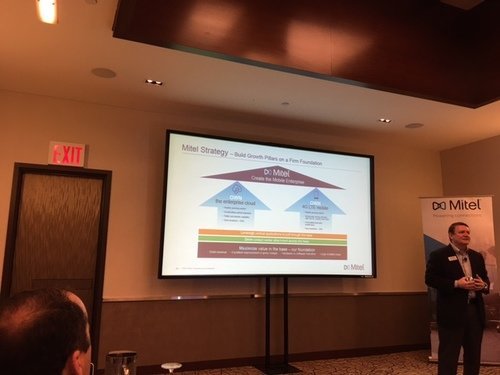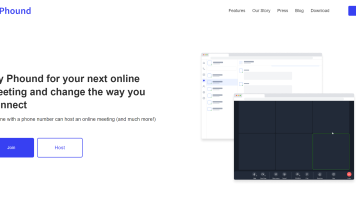This post has been updated on April 15, 2016 at 4:30 pm with feedback from Wes Durow, CMO of Mitel. Also, it turns out we broke the news on the potential of this merger even earlier than thought… December of 2015.
Last month my fellow TMCnet blogger Peter Radizeski broke the news that Mitel was buying Polycom – so if you’re a TMCnet reader, once again, you got in front of this news. Peter had more thoughts on the matter today as it became clear the acquisition was happening. These are the pros and cons of this deal.
Bad: Polycom most logically should have ended up merging with Plantronics IMO – the companies are geographically close to one another and the synergies between headsets and other endpoints seemed like a perfect fit. I’ve thought this for many years. Peter Radizeski even credits part of Polycom’s challenges in selling phones to the growth of headsets from companies like Plantronics. Another benefit would have been the separation from a UC platform provider like Mitel. Wes however points out that Polycom is more than endpoints – much of their new technology has far broader applications.
Bad: This is a follow up from the item above but worth focusing on. The Polycom sales team was able to sell a phone/endpoint-first approach to UC. Meaning that if a company decided to buy phones from an open provider like Polycom, they could more easily switch PBX vendors. This is now a tougher pitch to make.
Good: Mitel will keep Polycom as a standalone business unit. Thank God. If they hadn’t, it could have really reduced sales of the product line in a few years. Polycom will continue to push their products as if they are independent. This will work with some companies but the competition will literally rip them apart – saying they are really just Mitel devices and won’t work as well with other vendors’ solutions.
Good: Mitel is piecing together a giant communications/tech company which focuses on cloud, UC and mobile and sells to carriers as well as enterprise. In a way, this makes them more like a small Cisco than just the corporate UC vendor they were just a few years back.
Good: According to Wes, when all is said and done, the debt leverage after the deal is done and synergies accounted for, will drop from 3.8x to 2.1x.
Good: Patents. They now have an amazing portfolio going back to the very first days of the PBX, video, IP communications, etc. You name it. One wonders however if there are some lawn mower patents included as well.
Good: Cross-selling opportunities are massive. Just think if they are able to sell Mitel UC solutions to current Polycom customers or get carriers who sell Polycom phones to buy Mavenir (now Mitel Mobility) solutions. The amount of deep relationships the company has – coupled with those Sir Terry Matthews brings to the table are literally enormous.
Good: Danaher. I bet I lost you there for a sec. OK, here goes. Rich McBee, the current CEO of Mitel comes from Danaher – which is more or less like Berkshire Hathaway but with higher levels of integration and a more hands on approach – think Six Sigma and Black Belts. In other words, Rich has deep experience in process and procedures – the exact things you need to pull off post-merger integration. As examples, Wes shared that Mitel Mobility grew 73% YoY while cloud which mostly came from the Aastra acquisition grew 44% YoY.
Good: New products and innovation. Mitel has lots of exciting things happening but then again so does Polycom – about 18 months ago Jim Kruger and Maurizio Capuzzo of Polycom told me they have many innovations coming in the future. I’m sure we’re all looking forward to seeing what they are. One is Accoustic Fence or Audio Fence and it is really cool. Check it out below.
In addition, Polycom doesn’t have a cloud business – Mitel will be able to take Polycom innovations and deploy them as cloud services. Telemedicine is just one good example. Also, the advanced audio technology can be integrated into VoLTE solutions – allowing for voice and video calls with superior quality levels. Mitel has 2 million cloud users already and these innovations can be rolled out to them as well as new customers. Much of Polycom’s innovations will come to the incubator I’ve described in the past. Specifically:
Mitel Next Accelerator is a think tank working on the next big thing but it needs to have products in a customer in one year – and they have to be paying customers. Moreover, the new innovations have be able to be rolled out more broadly.
Good: Scale matters to buyers of enterprise phone systems and the Polycom name is on par with Cisco to many people. This move cements Mitel as a major player in communications and tech and gives buyers more confidence.
Good: Mitel is executing on its strategic vision. Rich told us at a recent analyst meeting (see photo below) that they will continue to acquire legacy solutions and then grow them. A great description of what’s happening here.
That’s nine good reasons for the merger and two bad. Synergies (money saved) will exceed $180 million by 2018 – another reason mergers are done but not worth breaking out since you generally get these in every transaction. In all, the merger could be a very good one but the challenge will be from companies like Lifesize – who just recently became independent. If Polycom can fend off the emerging players and those from Asia while Mitel cross-sells and gets larger accounts, then we will judge this move as a success in a few years.






